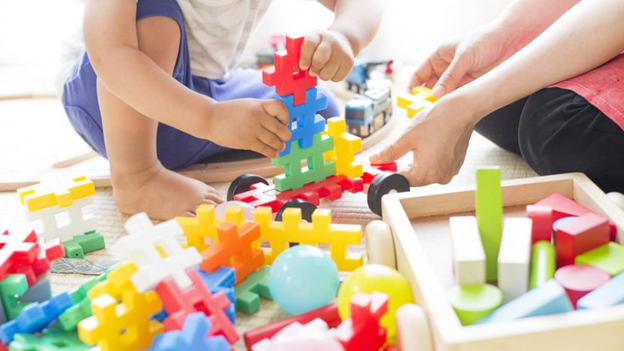
Category Archives: Uncategorized

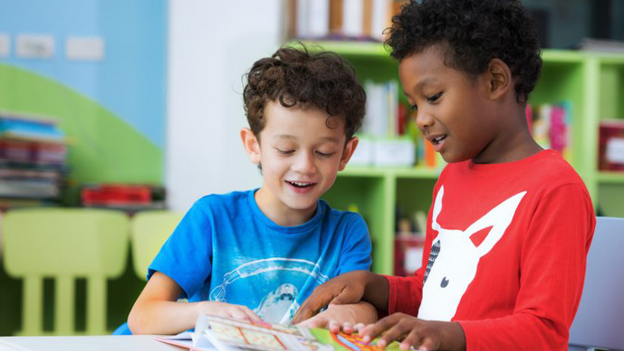
Give Your Child A Head Start In Preschool With These Social Tips!
3 January, 2019
Preparing your child for preschool seems like hard work, but it’s easier than it seems. Along with the necessary supplies, don’t forget these important preparation tips to give your soon-to-be preschoolers a head start.
Promote independence
This is particularly helpful when it comes to challenging situations. Unfortunately, your child’s life won’t always go smoothly. Encourage independence by allowing your child to complete tasks on their own. This includes simple tasks, like teaching them how to dress. While they may need assistance, they should be given the opportunity to do as much on their own as they can.
You should also experiment with leaving your child alone for short periods of time. Luckily, there are plenty of half-day preschool programs if your child isn’t ready to commit to a full day of learning just yet.
Don’t forget to socialize
While this isn’t a huge issue for children in large families, socializing doesn’t come naturally for some preschoolers. Many are nervous to begin a new chapter of their life, especially on the first day.
Try to combat feelings of isolation by giving them avenues for socialization. Whether that means taking them to a quality daycare before preschool or setting up play dates with other moms, introducing them to new people is the best way to get them comfortable for academic preschool programs. Luckily, the U.S. has around 14,000 day and summer camps on top of the daycare options you may have already considered. This will allow your child to form empathic connections with others and learn the basics for polite interactions in preschool.
Meet the teacher
For particularly nervous children, meeting the teacher beforehand will put your child at ease on the first day. Instead of a room full of strangers, your child can look to the front of the preschool and see a familiar face. Bring your child to tour a preschool or by letting them play on the school grounds before the first day.
Getting your child ready for preschool is more than just registering them. When you are ready to enroll your child in Learn and Grow Academy, try these tips before the first day.

The Value of Early Childhood Education: Why Preschool Is an Investment in Your Child’s Future
29 November, 2018
If you’re a working parent or you want to know which childcare option will be in your family’s best interest, you’ve probably considered academic preschool programs in your area. While preschool certainly isn’t your only choice in childcare, it is often the most beneficial. The benefits of preschool have been studied at length — and those benefits have been shown to help children grow in a variety of ways. When you prioritize early childhood education, your child will be more ready for academic challenges in the coming years. They may also experience increased social, emotional, and physical development as a result. And the advantages don’t end there; they’ll also be more prepared for life’s hurdles years down the road. Let’s take a closer look at some of the main advantages that early childhood education will provide for your child.
Cognitive Development
One of the most obvious advantages of attending preschool is the potential for cognitive development. The preschool classroom is typically the first place where new concepts and skills are introduced. Children become acquainted with letters, numbers, sequences, and songs in preschool; they’ll also learn more about the world around them through hands-on lessons. As a result, they’ll become more curious about their surroundings and will develop a hunger for knowledge. The creation of new neural pathways during this critical time will literally lead the way to lifelong learning.
As preschool enrollment has increased over the years, researchers have taken note of the positive effect of early childhood education on the skills and understanding of young children. Between 1993 and 2012, the percentage of children ages three to six who were able to recognize all of the letters in the alphabet increased by 17%, while the percentage of those children who were able to count to 20 or higher increased by 16%. Clearly, preschool classes act as the foundation for all subsequent education.
Physical Development
When you list all the benefits of preschool programs, the development of the mind will probably pop up first. When you enroll your child in preschool, they’ll also develop their bodies more readily. Many early childhood education programs promote recess and physical education, as well as physical games and other activities that will help your child develop their muscles and coordination. They also participate in dramatic play, which helps their emotional development and aid in their physical development. They’ll also develop their fine motor skills (often through the use of building blocks, finger paint, and other fun pastimes), which will come in handy when it comes time to learn how to write.
Social Development
Prioritizing early childhood education isn’t only about academics. When you enroll your child in preschool, they’ll also have the opportunity to grow socially. They’ll learn how to cooperate and share with others and learn how to solve problems that arise in social situations. They’ll come to understand how to compromise, how to empathize, and how to accept others from all different backgrounds. Their listening skills and leadership skills will be developed during this time, too. Figuring out how to relate to others is a lifelong endeavor, but children can get a head-start when their families opt for an educational program outside the home.
We know that preschool is just one of several possible options for early childcare. The preschool classroom serves as more than a means to care for your child; it’s also the place in which your child will start to develop into the person they’ll become. For more information on how our preschool can help your child realize their potential, please contact us today.

Word to the Wise: Preschool Warning Signs to Watch For
29 November, 2018
In the U.S., around 75% of young children participate in preschool programs. However, not all preschools are the same. While there are undoubtedly several highly rated preschools in your area, there may be some that aren’t quite up to par. How can parents tell the difference between the reputable schools and the ones they should steer clear of? Knowing what to look for in a preschool is important — but you’ll also want to recognize the warning signs to cross certain schools off your list. When you tour a preschool, be sure to look out for these red flags (and walk away if you spot them).
Frazzled Teachers
There’s no doubt that teaching (at any grade level) is a huge challenge. Some people are better suited for this profession than others. The quality and experience of the preschool teachers with whom your child interacts can make a huge difference in their early development. If you come across teachers who react in extreme or emotional ways, keep in mind that this does not serve as a positive model for young students. Rather than yelling or punishing preschool children for bad behavior, the teachers in the preschool classroom should know how to handle challenges calmly and rationally.
Overly chaotic classrooms and high turnover rates among staff can also tell you a lot about what to look for in a preschool (and what to stay away from). While preschool classrooms are often lively and even noisy, they shouldn’t be disorganized and out of control. And if the teachers seem unhappy or have been known to leave at frequent rates, this is to the detriment of both the students and the school itself.
Lack of Routine
One of the most important things to look for in a preschool program is what the average day is like. There should be a set routine that gives children structure, but the activities and lessons should vary to keep the students’ attention. A lack of consistent routine is a bad sign, as it can make children feel anxious. If children know what to expect on an average day, but can still be introduced to new projects, that’s when young students will thrive. Look for these signs when taking a tour and be sure to ask staff members about the setup of a typical day to assess whether this program is really in your child’s best interests.
Knowing what to look for in a preschool can be a challenge for parents. Keep in mind that watching for red flags may be just as important as searching for positive signs. To find out more about how our preschool program can help your kids develop in a variety of ways, please contact us today.
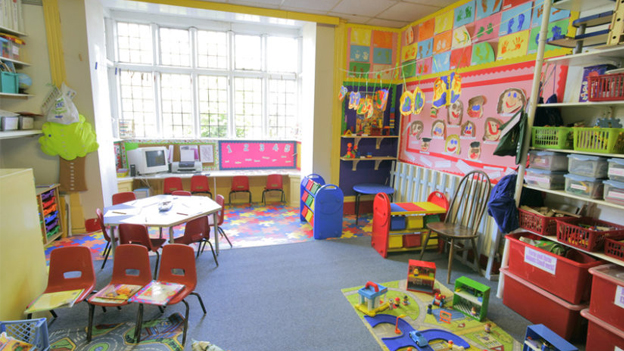
What Are the Differences Between Preschool and Daycare?
22 October, 2018
Many parents would love nothing more than to completely devote themselves to taking care of their children. However, work situations, other obligations, and even the needs of the children themselves may call for assistance from outside sources. Around 67% of full-time or part-time working mothers enrolled their children in center-based childcare in 2012, so this is a decision that many families are familiar with. If you’re unsure as to which type of childcare situation will be best for your family, we’re here to help.
For many families, the question of preschool vs daycare is at the top of their list. What exactly are the differences between these two types of care? Is one inherently better than the other? And what can you expect when enrolling your child? In today’s post, we’ll discuss the main differences between preschool programs and daycare centers to shed some light on which facility will benefit your child most.
Preschool Vs Daycare: Key Differences
The hours
One factor that will likely play into your decision — particularly if you (and your spouse, if applicable) work outside the home — is the operating hours of each type of facility. Generally, daycare centers are open for longer stretches of time during the day. They also remain open during holidays and summer vacation. They may even be able to accommodate later hours on a daily basis. Most preschools have shorter class sessions, though some do offer extended hours or summertime care. It really depends on the individual facility. The focus of each type of facility is different (which we’ll talk about a little later), so their priorities differ; while daycares focus on accommodating parents’ schedules, preschools tend to stick to specific operating hours for the sake of both students and teachers.
The staff
Another big difference between preschools and daycare centers is the staff you’ll find there. While there are plenty of kind and compassionate employees at daycare facilities, many are not formally or extensively trained in childcare or in early childhood education. Some may be, but others may be hired simply because they’re good with children. That’s not always a bad thing — after all, you probably wouldn’t turn down a babysitting hire because they didn’t have a degree in childhood education. There’s a lot of variety out there. In contrast, preschools usually employ teachers who have some kind of background in early childhood education. Instead of being supervised by someone who can really fill only a nannying role, your child will be watched and taught by those with experience in this field.
The purpose
If you’re weighing your options between preschool vs daycare, it’s essential to consider the two distinct purposes of these facilities. Daycares are meant to provide supervision and some (hopefully) stimulation for the children. Preschools are meant to provide both of those things and an educational introduction. Although some daycare centers will prioritize educational activities, it’s by no means a requirement. The focus of preschool teachers is to help young students develop their skills.
The requirements
Parents should note that there are often very different requirements for preschool than there are for daycare. Daycare facilities will accept children from a very young age. Most facilities will be happy to enroll your toddler and will care for them until they enter elementary school. Some daycare centers will even accept very young infants. That can be a plus for parents who require assistance right away. The requirements for preschool centers are typically more rigid, as most accept students between three and five years of age and often require that they are potty-trained. Again, it depends on the facility — which is why parents must conduct careful research before making a final decision.
In the preschool vs daycare debate, there isn’t a one-size-fits-all decision. What works best for your family may not be the choice your neighbor makes for theirs. However, in order to make an informed choice about childcare, it’s essential to understand the differences between your options and determine your own priorities in caring for and educating your children.
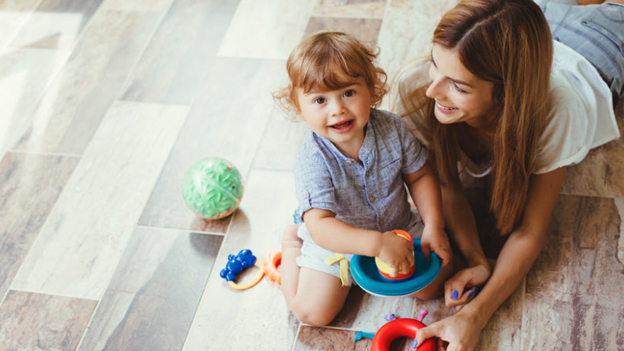
Choosing Childcare: Tips for First-Time Parents
19 October, 2018
As a first-time parent, you’re probably feeling an immense amount of pressure to ensure your child receives the best quality care and can take advantage of every possible opportunity that’s afforded to them. These factors come into play early in life when it comes time to choose a childcare option for your family. Choosing between preschool programs, daycare, and in-home childcare can be a challenge — even for more experienced parents! In today’s post, we’ll discuss some important tips to keep in mind when going through this process for the first time.
Start Early
From 1990 to 2013, the percentage of three- to five-year-olds enrolled in preprimary programs increased from 59% to 65%. With so many families wanting to enroll their children in the best local programs, competition can be stiff. That’s one of the reasons why it’s so important to start this process early. With so many factors to consider and so many facilities to evaluate, you’ll probably need more time than you think. Plus, you’ll need to submit your applications with plenty of time to spare so that your family will have options when you really need them.
Determine a Budget
Finances may not be your favorite subject to think about, but it’s an important part of choosing the right childcare situation for your family. Keep in mind that just because a preschool or daycare program is at the top of your price range, that doesn’t mean it’s automatically the best option for your child’s needs. On the other hand, cost should not be your only consideration here. The average cost for care will depend on where you live and the type you choose, but there may be other components that make a difference. You’ll need to determine how much you’re comfortable spending on childcare before you start to really delve in.
Weigh the Pros and Cons
Sometimes, zeroing in on your childcare budget will illuminate the best choice for your family. But as we mentioned, that shouldn’t be the only factor. You’ll also want to weigh the pros and cons of each type of care situation, as well as the specifics of each facility on your list. This will involve asking a lot of questions and doing a fair amount of research. You may not be able to obtain all of the information you need here, but this can make choosing between several options a lot less overwhelming. If you can cross a certain type of care or some specific options off your list, you’ll feel much more prepared to forge ahead.
Obtain Recommendations
Another way to make your decision clearer is to talk to your friends who have kids or other community members to hear what they have to say. You can read as many online reviews as you want, but it often helps to hear honest feedback from people you actually know and trust. Learning how other families manage new routines, new expenses, and new environments can make your own decision a bit clearer or make you think differently about an option you dismissed early on. Being armed with the opinions of your friends, relatives, and neighbors who have gone through this experience first-hand can help you feel like you’re not alone.
Schedule a Tour
Of course, you’ll also need to check out the final contenders for yourself before enrolling your child. Even if a facility has a stellar reputation, you’ll want to assess the environment to ensure that it meets your standards and that it’ll be a good fit for your child. If you decide on a daycare or preschool, taking a tour can allow you to meet the teachers and learn more about the facility’s philosophies. It can also be a great way to introduce your child to the idea of childcare; this can be a big adjustment for all family members, so the more familiar it is, the better off everyone will be.
Choosing the right care scenario for your family can be tough — and as a first-time parent, you’re probably feeling stressed. But as long as you keep these tips in mind, you’ll be able to find the facility or situation that is best for everyone.

Reflecting On Your Child’s Summer Camp Experience
12 October, 2018
The end of summer is upon us, and children are going back to their regular school and daycare routines. If your child was enrolled in a summer camp, now is the time to reflect on their experience and whether their camp fulfilled your wants and your child’s needs. Consider these criteria — the standards of what a good summer camp program should provide for you and your children.
They Should Have Come Home Tired Out
When a summer camp has done their job right, children are wonderfully tired. Their bodies and brains got the right amount of exercise for the day, allowing them to sleep soundly and be ready for new challenges the next day.
They Shouldn’t Have Been Bored
Just like how the best childcare center curriculums strive to stimulate children, summer camp should not be a boring, loosely-supervised sitter service. A variety of planned activities and events need to be available for kids of all ages to be engaged and stimulated. A creative and knowledgeable summer camp has an inexhaustive list of things for kids to do in summer.
They Should Have Been Comfortable With Their Peers and Counselors
Ideally, summer camps should feel like a second home or fun vacation to your child. With the right group, they should feel supported and comfortable. The American Camp Association actually reports that 92% of campers they surveyed said people at their camp helped them to feel good about themselves. Good! Camp should be a confidence-building and relationship-building experience. If issues between children arose, it’s the job of the camp to help resolve them fairly. And absolutely no camp counselor or employee should have made your child feel unusually uncomfortable — that’s a red flag.
They Should Have Had Some Kind of Learning Experiences
Things for kids to do in summer camp should not be limited to board games and free play. While free and creative play are essential every day for a child, they also need structure and learning experiences to keep molding their minds even when school isn’t in session.
You Should Have Felt Peace of Mind
Simple. You should have felt comfortable leaving your child in the care of camp, respected, and in the loop.
When choosing a summer camp for next year, have these criteria in mind. Did your previous summer camp not fulfill them? It may be time to look elsewhere.
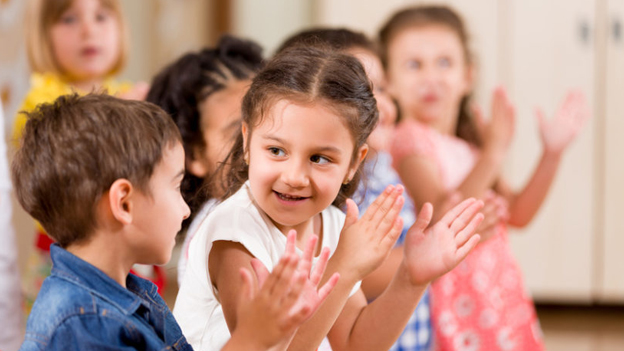
Preschool Philosophies: Comparing Common Teaching Methods
20 September, 2018
Between 1990 and 2013, the percentage of three- to five-year-olds enrolled in U.S. preprimary programs increased from 59% to 65%. Parents who want to ensure a high quality education for their children will often opt to enroll their little ones in academic or play-based preschool programs. As you start to delve into your research, you may realize that there are several different preschool philosophies to choose from. These methods are used by preschool teachers all across the nation — and while all of them have their distinct benefits, not every one will be the right fit for your family. Let’s take a closer look at some of the types of preschool program philosophies you’ll likely come across during this process.
Montessori
This type of preschool program gets its name from Maria Montessori, an Italian physician and educator, who founded this movement in the early 1900s. The main idea is that each child is an individual learner and that their personality is developed through sensory learning and hands-on activities. However, these activities are generally more work-based than play-based. Montessori preschool teachers gently encourage students to take care of their needs and belongings, as well as to reduce errors, improve concentration, and support each others’ learning endeavors.
Play-Way
The play-way method puts an emphasis on learning through playing. Preschools that adopt this philosophy believe in the importance of activities such as role playing, singing and music, free play, virtual games, group story time, and other hands-on activities. The focus here is on the needs of the students and how the activities performed can address those needs with no pressure. There are some play-based preschools that combine this philosophy with others for a more balanced curriculum.
Waldorf
This teaching method, which first was developed in Germany during the early 20th century, focuses on growth through imagination. Reading and writing are not introduced until later on, as this philosophy emphasizes oral education and creativity. There’s also an emphasis on consistent routines, familiarity, and long-term bonds between teachers and students. Preschool activities in these environments may include play-acting, story-telling, nature walks, singing, playing games, making toys, and even cooking. This philosophy aims to help students develop emotionally, physically, and intellectually.
Reggio Emilia
Like the other Italian teaching method we previously mentioned, the Reggio Emilia method believes in allowing students to take a leading role in their own learning and teaching students through activities. However, the underlying approach of Reggio Emilia is that this way of learning allows children to make their own place in society by forming relationships, prioritizing communication, and promoting spontaneous curiosity about the world. The preschool classroom has the material to jumpstart the learning process, but children are guided to create projects that speak to them. These schools give high priority to creative endeavors such as music, dance, art, and writing, and their projects are well-documented to allow both teachers and parents to review the students’ progress.
High/Scope
The High/Scope method is one of the newer preschool philosophies, as it was developed in the U.S. during the 1970s. These programs are academic-based, rather than focusing on social or emotional development. Active participatory learning is the main focus here, which allows students to learn collaboratively and make independent choices about their experiences. There are consistent routines and planned activities in subjects like reading, science, and math, but there are also creative activities like storytelling and singing. Often, these programs are recommended for at-risk children and those who need one-on-one attention.
Bank Street
Bank Street method preschools focus on child development through hands-on activities that allow students to experience and solve problems (such as puzzles, building blocks, and clay). These kinds of programs regard students as active learners who also participate in social science lessons, cultural lessons, science lessons, and imagination-based play. Preschool teachers guide the students, who may work either alone or in groups; the students themselves set the pace for learning.
These are by no means the only types of preschools you may find during your search. In fact, many preschool teachers and facilities embrace a combination of these philosophies in order to reach all different learning styles. To find out more about our curriculum or to schedule a tour of our facility, contact us today.
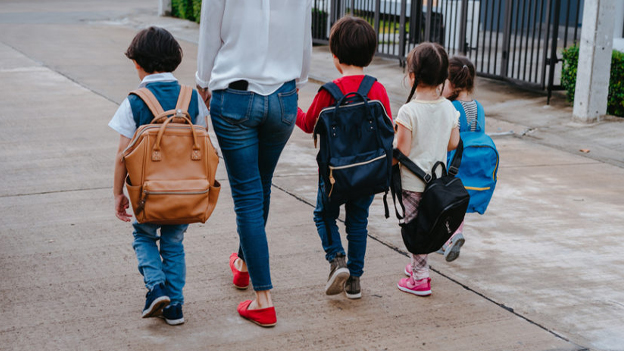
Transition Tips: Helping Your Preschooler Adjust to a New Class and Schedule
17 September, 2018
Now that September is well underway, your child might already be spending their mornings or afternoons in their preschool classroom. However, adjusting to preschool can be tough for many kids (and their parents!), even after a few weeks’ time. Whether your child recently began school or you’re looking ahead to next year, you may have concerns about their adjustment to the new changes. These transitional tips can be a good place to start.
Visit Beforehand
Before your local preschool program actually starts, you should take the time to visit the facility and get to know the teachers. A little bit of familiarity can make a world of difference in your child’s experience during those first few days. Your child can get to become acquainted with the activities and the schedule while still having you close by for their comfort. Then, by the time class is actually ready to begin, they’ll feel more equipped to make the transition even without your presence.
Shift Routines Gradually
School comes with a whole new set of routines. This new schedule will likely impact when they (and you) get up in the mornings, the breakfast regimen, how long they’ll spend in the car, and what kinds of activities they’ll do during the day. It may not seem like a big change to you as a parent, but remember that you’ve had to adjust to new routines throughout your adult life. You’re used to it in a way that your child is not. That’s why you shouldn’t expect your child to be at their best if you wait until the last minute to implement these changes. By gradually switching up their routine to accommodate these shifts, their transition will be much smoother. This gives you the opportunity to establish new traditions, make the most of your time together, and take all the changes in stride.
Talk to the Teacher
If your child tends to be quite attached to their family members or dislikes changes in their routine, it may behoove you to keep the lines of communication open with their preschool teacher. Although 68% of four-year-olds were enrolled in preprimary programs in 2013, that doesn’t mean that all toddlers are able to roll with the punches right away. You may want to talk with staff members before and after classes begin to ensure your child is adjusting and discuss strategies to ease their transition on a continual basis. If you observe behavior that makes you believe your child isn’t adjusting as well as they might, don’t hesitate to talk to their teacher and assess what steps everyone can take to make some more progress.
Be Patient and Positive
Remember that both inside and outside the preschool classroom, changes don’t happen right away. Don’t be too quick to come to the conclusion that your child isn’t ready for the preschool classroom or that you’ve chosen the wrong school. These are big adjustments for little ones who don’t have a lot of life experience. Even when you’re armed with all of the best back to school tips, these transitions do take time. Try to remind yourself of that and maintain a positive attitude throughout. Every child will learn and adjust at their own pace; practice patience and don’t get discouraged if your child is having a tough time with the transition. Eventually, your child will flourish — especially if you maintain an open mind and continue to encourage them throughout their educational journey.
Although this time of year is full of the excitement that comes with new beginnings, all these changes can be overwhelming for many preschoolers. If you follow these tips and make an effort to ease their transition into the preschool classroom, you’ll set them up for success.
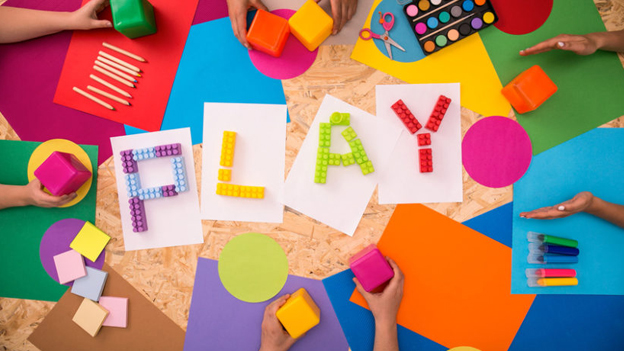
How Structured Play Benefits Your Preschooler
24 August, 2018

